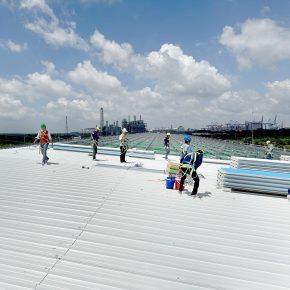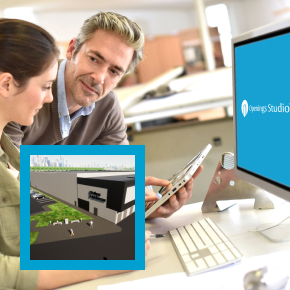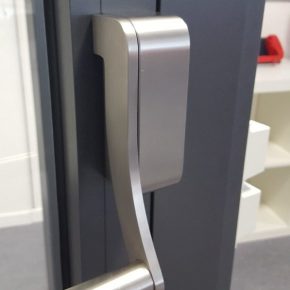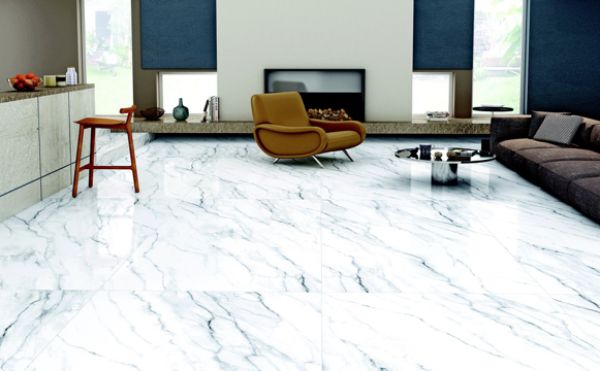
Tiles and tribulations: how professional tilers can change with the times
As we step further into the 21st century, we have reached such rapid levels of development that our industries must continually evolve or face extinction entirely. With question marks over our environment and technology evolving at breakneck speed, it can be hard to know which direction the industry will take next.
In today’s post, we’ll be exploring today’s tiling industry, what’s happening and what’s to come – so you can move with the times and stay on top of the latest developments.
Interior design trends
The shifting aesthetics in the world of tiles is nothing new – from Egyptian settlers to modern day apartment blocks, a lot has changed in terms of style. As trends come and go, the tiling industry, and the wider construction industry as a whole, are increasingly monitoring the flag-bearers in interior design – who dictate the fashion course of the months and years ahead. Suppliers now stock vast swathes and varieties of tiles to accommodate the rapidly changing tastes of the public, and increased demand for material replicas has upped the need for innovation and creativity in the industry.
Tiles are changing not only in terms of their style, but in their physical form, too. The standard shape, size and weight of tiles has been modified into a modern specification, with wall tiles becoming thinner to reduce laying time and overall weight (and, subsequently, transportation costs). Tiles also tend to be larger in width for the same reason, making DIY home renovation an increasingly appealing and feasible prospect for homeowners looking to save money – which can be either a benefit or a drawback for the tiling industry, depending which end of the supply chain on which you sit.
Technological advances
Technology and tiles don’t feel like an obvious match; for an industry that has existed and thrived for nearly 7,000 years on a handful of core principles, new technology does not seem best placed to be interfering. When we think of tech, we often imagine gadgets and complex software – but the reality can be different, and often a lot more subtle.
An example of technological advances in tiling can be seen in the increasingly popular ‘mock’ tiles that imitate other classic materials, like wood or marble. Recent developments in tile manufacturing mean that we can produce almost like-for-like porcelain equivalents of many materials at a lower cost, and with lower environmental impact than their ‘real’ counterparts – making these copycat tile types an appealing prospect for designers and homeowners.
A subtle improvement to modern day tiles can be found in their design, which has improved exponentially over recent decades. Fresh developments in the printing industry, focusing on improved accuracy and a reliance on computer programs, provide tilers with increasingly detailed and realistic-looking tiles at no greater cost – opening the doors to all sorts of possibilities for patterns and images in the future. Either way, whether you’re a consumer or retailer, manufacturer or supplier, new advancements are brimming with potential and expanding on the practical applications of tiles globally – so embracing them can be the only obvious course to take.
Sustainability questions
As society evolves, the ever-present issue lingering over our planet is that of sustainability. A huge driving force behind the development of new technologies in recent decades, the need to alter and update our services and systems to sustainable alternatives will limit our impact on the planet in the short-term, and make sure it’s here for the generations of the future in the long-term. In the construction industry in particular, the emphasis on sourcing ‘green’ materials has led to innovation across the board, with suppliers becoming more and more focused on achieving green standards of manufacture and service – shooting for accreditation in green schemes like BREEAM.
A more general shift towards lower emissions, better working conditions, renewable energy in manufacturing and recycling has rubbed off on the tiling industry, too. In today’s market, construction companies wear sustainability like a green badge of honour, and many now operate checks on their suppliers to ensure certain standards are upheld – so it’s in the best interests of suppliers to apply the necessary resource to achieve those standards or face losing valuable business opportunities.
Tiles may have been around for thousands of years, but it’s essential that each industry can adapt to the changing social, economic and political landscape we are all a part of. From new technologies to physical reforms and environmental issues, it’s clear that the tiling industry is going through a period of significant change. Knowing where the change is happening is the difficult part – but with our guide, you can stay on top of the latest movements.
Latest news

15th April 2024
EJOT Colorfast chosen for Kingspan’s highly sustainable new Asian factory
More than 120,000 EJOT Colorfast self-drilling fasteners have helped Kingspan to create a thermally superior, visually-appealing building envelope for its first purpose-built manufacturing plant in South East Asia.
Posted in Articles, Building Industry News, Building Products & Structures, Building Systems, Case Studies, Posts, Restoration & Refurbishment, Retrofit & Renovation, Roofs, Sustainability & Energy Efficiency
15th April 2024
ASSA ABLOY helps new manufacturing plant achieve LEED Gold certification
Improving sustainability performance is becoming a higher priority for building developers, owners and users. One consequence is fast-growing demand for green building certifications — and therefore specification. Specialist input can make the difference between hitting and missing a project target, as ASSA ABLOY explains here…
Posted in Access Control & Door Entry Systems, Architectural Ironmongery, Articles, BIM, Infrastructure & CAD Software, Building Industry News, Building Products & Structures, Building Regulations & Accreditations, Building Services, Case Studies, Doors, Facility Management & Building Services, Information Technology, Retrofit & Renovation, Security and Fire Protection, Sustainability & Energy Efficiency
12th April 2024
Strand Hardware: D-Fine Makes a Splash for Seaside Safety
Strand Hardware’s D-Fine range is designed to withstand the harsh conditions prevalent in coastal environments. It is made from 316 stainless steel.
Posted in Access Control & Door Entry Systems, Architectural Ironmongery, Articles, Building Industry News, Building Products & Structures, Building Services, Doors, Facility Management & Building Services, Health & Safety, Innovations & New Products, Restoration & Refurbishment, Retrofit & Renovation, Security and Fire Protection
12th April 2024
GEZE UK – accredited as a Living Wage company
GEZE UK is delighted to announce that the company has been accredited as a Living Wage Employer. The real Living Wage is the only UK wage rate based on the cost of living.
Posted in Access Control & Door Entry Systems, Architectural Ironmongery, Articles, Building Industry News, Building Products & Structures, Building Services, Doors, Facility Management & Building Services, news, Security and Fire Protection
 Sign up:
Sign up: 